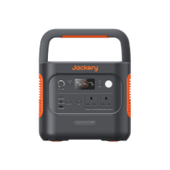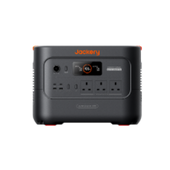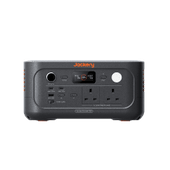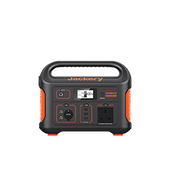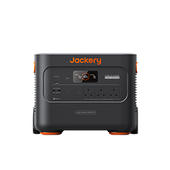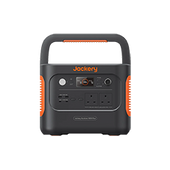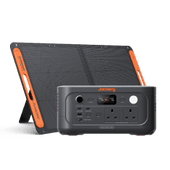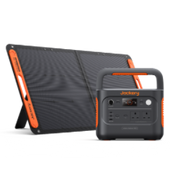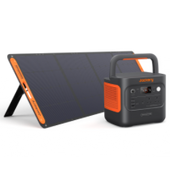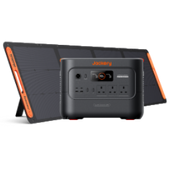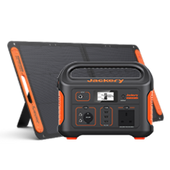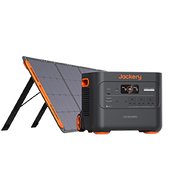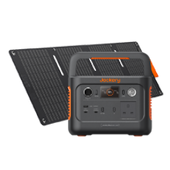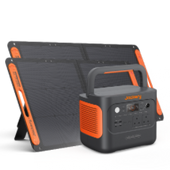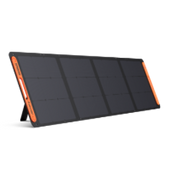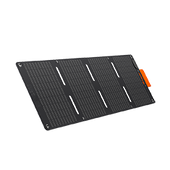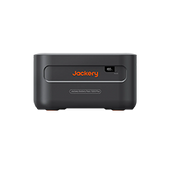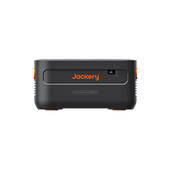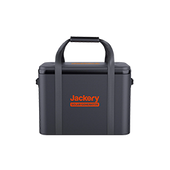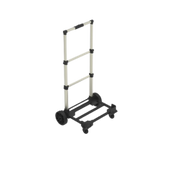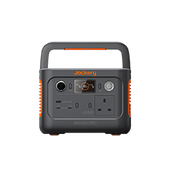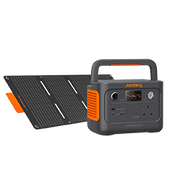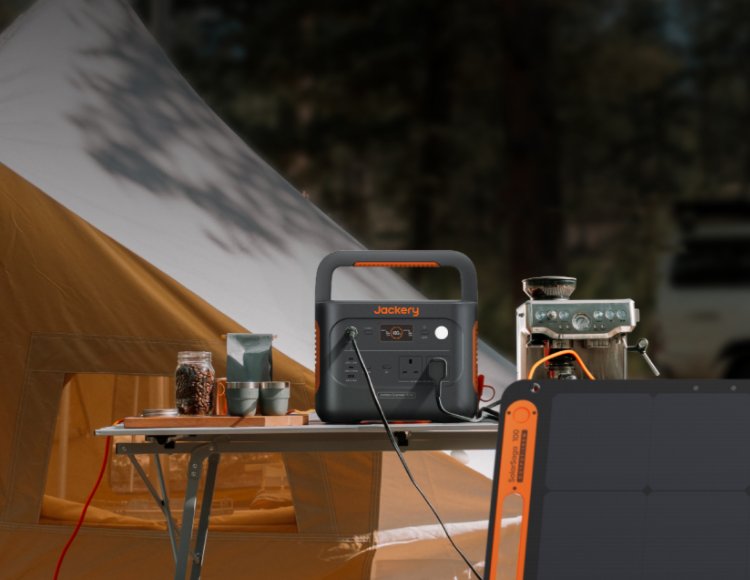On March 29, 2025, Google Cloud experienced a significant six-hour outage in its US-east5-c zone, located in Columbus, Ohio. This disruption affected over 20 services, including BigQuery and Cloud SQL, due to a failure in the uninterruptible power supply (UPS) systems. The incident was triggered by a loss of utility power, which led to a cascading failure within the UPS, rendering it unable to provide backup power as intended.
This event underscores the critical importance of reliable UPS systems because even brief power interruptions can cause major disruptions. Having alternative power solutions, such as a solar-powered power bank, can help ensure the continued operation of essential devices during outages. A solar power generator in the UK is also a handy backup for smaller devices, as it offers portable and eco-friendly charging when the main power is down.
Quick Review of The Google Cloud Outage (2025.03.29)
Google Cloud experienced a significant outage in its US-east5-c zone in Ohio on March 29, 2025. The disruption lasted approximately six hours and affected over 20 services, including BigQuery, Cloud VPN, Cloud SQL, and Virtual Private Cloud.
The root cause was traced to a failure in the uninterruptible power supply (UPS) systems. Specifically, a voltage swell event caused a mismatch between the voltage tolerances of the UPS and the connected network equipment. The UPS was designed to tolerate up to 120% of the nominal voltage, while the network equipment could handle up to 110%. When the swell exceeded this, the network equipment entered protective shutdowns.
What made the situation more critical was that the voltage swell persisted for nearly a minute—long enough to trigger cascading failures. In response, Google Cloud had to manually reboot services and reallocate resources to stabilize operations, which highlights the need for tighter UPS power backup configurations, voltage harmonization, and real-time monitoring in cloud data centres.
Reflection and Insights from The Incident
This incident underscores the critical importance of robust UPS power backup systems in maintaining cloud service reliability. The failure highlighted the need for precise alignment between UPS configurations and the tolerances of connected equipment.
In response, Google implemented several remediation measures, including reconfiguring the datacenter-level UPS voltage regulator and deploying a double conversion UPS in the affected datacenter's power distribution design. These steps aim to enhance resilience against future voltage fluctuations and ensure that UPS systems can effectively provide backup power during outages.
What is The Core Value of an Uninterruptible Power Supply?
An uninterruptible power supply (UPS) is a device that provides emergency power to connected equipment when the main power source fails. It acts as a buffer, preventing disruptions during blackouts, surges, or voltage drops. Its core value lies in preserving uptime, data integrity, and operational continuity, which make it essential for today’s power-reliant world.
The Function of A UPS
1. Enterprise-level: At the enterprise level, a UPS is essential for data centres, hospitals, financial institutions, and industrial facilities. It protects servers and critical infrastructure from downtime and data loss during power disruptions. A robust, uninterruptible power supply ensures uninterrupted workflow, prevents costly outages, and supports smooth switchover to backup generators.
2. Personal level: For home offices or individuals, a UPS safeguards computers, routers, and entertainment systems. It allows users to save work, safely shut down devices, and maintain internet connectivity during brief outages. As remote work becomes more common, personal-level uninterruptible power supplies are gaining popularity for added reliability.
The Limitations of Traditional UPS
While traditional UPS systems are invaluable, they come with notable limitations, such as:
§ They often rely on lead-acid batteries, which require regular inspections and timely replacement.
§ Maintenance is easy to neglect, especially in non-IT environments. This may lead to degraded performance or complete failure when backup is most needed.
§ Traditional UPS models can also be bulky, less energy-efficient, and are not ideal for solar or renewable power integration.
§ Older UPS units can produce significant heat, requiring dedicated cooling systems to prevent overheating.
§ Most traditional UPS systems emit noticeable noise during operation. This will cause disruption in quiet environments like home offices or bedrooms.
These limitations highlight the growing need for modern, easy-to-maintain UPS solutions that offer better performance, longer life cycles, and compatibility with clean energy systems.
Daily "Electricity Anxiety" Scenarios and Needs
In our tech-driven world, sudden power outages can trigger what many call “electricity anxiety.” The term refers to the fear of losing power-dependent conveniences or essentials. Different lifestyles have different backup needs, but all have one priority, and that is “staying connected and protected.” Here are some examples:
Remote Workers
Remote workers rely heavily on uninterrupted power to meet deadlines, attend virtual meetings, and protect sensitive data. A sudden blackout can disrupt productivity and result in data loss. This is where a battery backup for computers becomes essential.
It not only prevents work interruptions but also offers enough time to save files, shut down properly, or continue working until the main power returns. For professionals working from home or running a business online, a reliable, uninterruptible power supply is a vital safeguard.
Smart Home Enthusiasts
Smart home systems often feature automated lighting, voice-controlled assistants, smart thermostats, and security cameras. All these systems require constant electricity and internet connectivity. Even a short power outage can disable key functions or expose the home to vulnerabilities.
An uninterruptible power supply provides essential support by keeping routers, control hubs, and key smart devices operational. This ensures a seamless smart home experience and maintains automation and security even during temporary power loss.
Emergency-Prepared Families
For families who prioritize safety and preparedness, power outages are a serious concern, especially if they rely on medical equipment. A common example is the power backup for CPAP machines used by individuals with sleep apnea.
During extended outages, a UPS or battery backup ensures these devices remain functional overnight. Emergency lighting, mobile phone charging, and refrigeration for medication are other critical needs that a reliable, uninterruptible power supply can fulfil. It helps families stay safe, calm, and in control during crises.
Outdoor Enthusiasts
Whether camping, hiking, or travelling off-grid, outdoor enthusiasts often face limited access to traditional power sources. In such times, having a portable, uninterruptible power supply or a solar-powered battery can support GPS devices, smartphones, lights, or even mini-fridges.
While enjoying nature, staying powered ensures not only convenience but also safety as it enables users to navigate, communicate, and respond to emergencies. Portable units designed for outdoor use are increasingly popular for their versatility and reliability.
How to Deal with Unstable Electricity in Daily Life?
In a world increasingly reliant on electricity for work, communication, comfort, and safety, unstable power can cause anxiety and disruption. Here is how to proactively manage daily life when faced with frequent blackouts, voltage drops, or unreliable supply.
1. Assess Your Own Power Needs
Before choosing a solution, start by identifying the essential devices and systems you rely on during an outage. This includes:
§ Computers and internet routers (especially for remote workers)
§ Medical devices like CPAP machines
§ Refrigerators, lighting, or heating/cooling systems
§ Phones and communication tools
This assessment helps determine the size and type of uninterruptible power supply (UPS) or generator you need. For example, a basic battery backup for computer systems may suffice for a home office, while a more robust system may be required for entire household needs.
2. Choose The Right Backup Power Solution
There are several options available, each with unique strengths:
§ Uninterruptible Power Supply (UPS): Ideal for short-term backup and protection from voltage fluctuations. A good UPS protects sensitive electronics, prevents data loss, and ensures smooth device shutdown.
§ Solar Power Generators: These are an increasingly popular solution due to their eco-friendliness, low noise, and independence from fuel supplies. A solar power generator can provide clean and renewable energy during extended outages. In the UK, this is particularly beneficial in off-grid settings or for environmentally conscious households.
3. Regular Maintenance and Test Backup Power Systems
No matter how advanced your system is, it needs regular upkeep to ensure reliability:
UPS Maintenance Tips:
§ Inspect battery health every 3–6 months
§ Replace batteries according to the manufacturer’s timeline (typically every 3–5 years)
§ Keep the UPS in a cool, dust-free environment
§ Test the system by unplugging from mains to simulate an outage
§ Monitor load levels to avoid overloading the UPS capacity
Solar Generator Maintenance:
§ Clean solar panels regularly to maintain efficiency
§ Check battery charge cycles and monitor storage levels
§ Store in a dry, safe place when not in use
§ Update firmware if the device supports smart features
Jackery Solar Generator: A Reliable Power Backup Option

In an age where power outages can interrupt everything from remote work to essential medical devices, having a reliable power backup solution is a necessity. That’s where solar generators from Jackery come into play.
Known globally for innovation in portable energy, Jackery has built a strong reputation in clean, sustainable power solutions. Established in California in 2012, Jackery introduced the first lithium portable power station in 2016 and has since remained at the forefront of solar-powered technology.
Today, Jackery solar generators offer dependable, high-performance, uninterruptible power supply—tailored to a range of every day and off-grid scenarios.
Jackery Solar Generator 2000 v2
The Jackery Solar Generator 2000 v2 offers a powerful 2042Wh capacity and 2200W output, making it ideal for running essential home appliances like refrigerators, microwaves, or even portable air conditioners. Its multiple ports (AC, USB-A, USB-C) allow you to charge and run several devices simultaneously, such as a laptop, phone, or CPAP machine. This generator, with all its special features, is perfect for battery backup for computers and power backup for CPAP users.
What sets this uninterruptible power supply apart is its innovative LiFePO4 battery and EV-grade CTB (Cell to Body) structure, delivering high energy density in a lightweight (38.6 lbs) and compact body. Thanks to its Emergency Super Charge Mode, you can reach 80% capacity in just 52 minutes—ideal for urgent situations. With multiple charging options (AC, solar, car) and ultra-quiet operation (as low as 30dB), this generator fits seamlessly into both indoor and outdoor lifestyles.
Jackery Solar Generator 2000 Plus
The Jackery Solar Generator 2000 Plus is designed for serious users who need more than just a few hours of backup. With its expandable capacity from 2kWh up to 12kWh using add-on battery packs, this generator can power heavy-duty devices up to 3000W, such as construction tools, home HVAC systems, and large entertainment setups.
Whether you are preparing for extended outages or planning long camping trips with lots of equipment, this model offers unmatched flexibility. It features ultra-fast solar charging (up to 6 x SolarSaga 200W panels for 2-hour charging), smart app controls, and both Bluetooth and WiFi connectivity. It is surprisingly excellent for its performance class, making it a top-tier, uninterruptible power supply for those who want off-grid power with grid-level performance.
Jackery Solar Generator 1000 v2
If you seek a lighter, more compact option, the Jackery Solar generator 1000 v2 is a perfect fit. With a 1500W output—50% more than its predecessors, it can handle essentials like kettles, mini-fridges, and even small air conditioners. It is also perfect for remote workers and travellers looking for battery backup for computers, with up to 100W dual PD USB-C fast charging.
Weighing only 23.8 lbs, it is easy to carry and ideal for mobile setups. This unit also supports UPS (uninterruptible power supply) mode with a fast switchover time of ≤20ms, protecting sensitive devices like desktop computers and fish tanks from power interruptions. With three versatile charging methods (AC, solar, and car), it is a compact yet powerful backup solution for both indoor and outdoor users.
Conclusion
For those navigating today’s power challenges, Jackery solar generators offer a practical and future-ready solution. Designed for everyday users, they combine the reliability of an uninterruptible power supply with the sustainability of solar energy—no noise, no fumes, just seamless backup when you need it most.
Whether it is powering your work-from-home setup, keeping a CPAP running through the night, or ensuring your family stays safe during outages, Jackery makes energy independence simple. With a range of options to suit different lifestyles, Jackery products empower ordinary people to take control of their power—anytime, anywhere.





